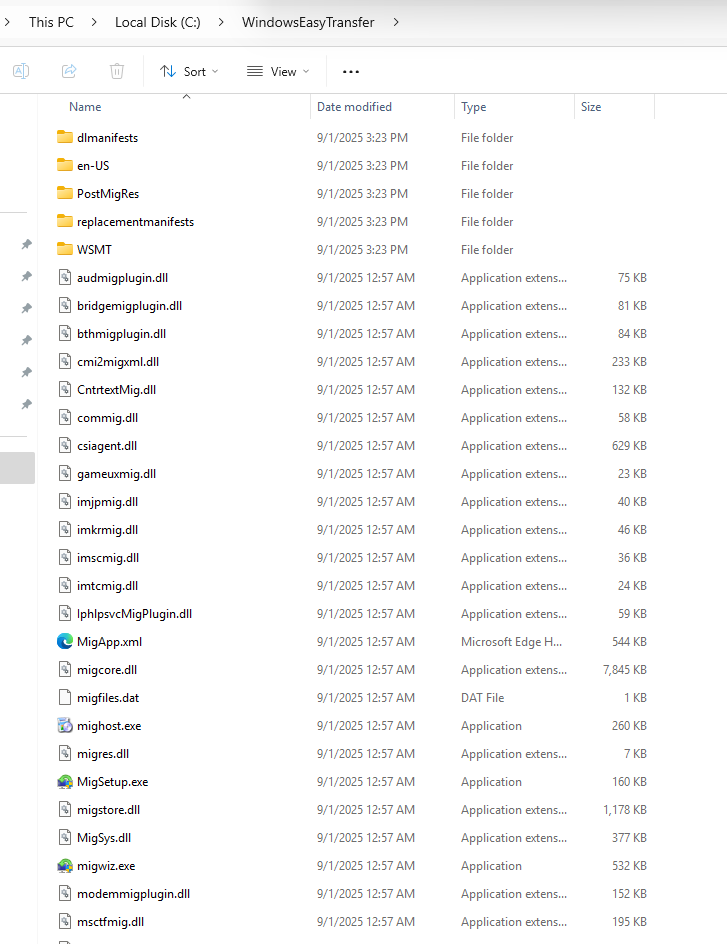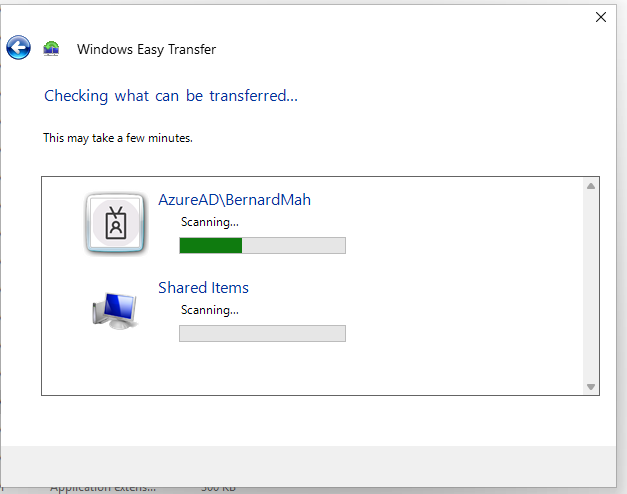(178) Microsoft Intune - User Profile Backup & Restore and Windows Easy Transfer
- Mr B SOE way
- Sep 3
- 3 min read
From 3 years ago, I did a blog around https://soeintunedevice.wixsite.com/home/post/34-backup-restore-win32-app using batch files from a previous customer and previous MSP life. This time around, I have brought it back to life with using 'PowerShell':
User Profile Backup from PC to OneDrive
Backups Chrome favourites
Backups Edge favourites
Backups Signatures
User Profile Restore from OneDrive to PC
Restores backup for Chrome favourites
Restores backup for Edge favourites
Restores backup for Signatures
As well as a personal favourite which I used during my corporate days "Windows Easy Transfer" which was very popular during the Windows 7 days.
With User Profile Backup from PC to OneDrive - User Context app
You just need to find and replace "MR B SOE Way" with your OneDrive variables
#region Config
$AppName = $PName + "_"+ $Pversion +"_Package"
$client = "Mr B SOE Way"
$logPath = "$env:ProgramData\$client\logs"
$logFile = "$logPath\Backup Chrome Edge Signatures to OneDrive.log"
#endregion
#region Logging
if (!(Test-Path -Path $logPath)) {
New-Item -Path $logPath -ItemType Directory -Force | Out-Null
}
Start-Transcript -Path $logFile -Force
Write-Host "Backup Chrome Edge Signatures to OneDrive...."
# Create a tag file just so Intune knows this was installed
if (-not (Test-Path "$($env:ProgramData)\MrB\Backup")) {
Mkdir "$($env:ProgramData)\MrB\Backup"
}
Set-Content -Path "$($env:ProgramData)\MrB\Backup\Backup.ps1.tag" -Value "Installed"
#creates folders in Onedrive
New-item -path "$env:USERPROFILE\OneDrive - Toyota Finance Australia LTD\Documents\Backup" -ItemType Directory
New-item -path "$env:USERPROFILE\OneDrive - Toyota Finance Australia LTD\Documents\Backup\Edge" -ItemType Directory
New-item -path "$env:USERPROFILE\OneDrive - Toyota Finance Australia LTD\Documents\Backup\Chrome" -ItemType Directory
New-item -path "$env:USERPROFILE\OneDrive - Toyota Finance Australia LTD\Documents\Backup\Signatures" -ItemType Directory
#Copies from device to OneDrive
Copy-Item -Path "$env:USERPROFILE\AppData\Local\Microsoft\Edge\User Data\Default\Bookmarks" -Destination "$env:USERPROFILE\OneDrive - Toyota Finance Australia LTD\Documents\Backup\Edge"
Copy-Item -Path "$env:USERPROFILE\AppData\Local\Google\Chrome\User Data\Default\Bookmarks" -Destination "$env:USERPROFILE\OneDrive - Toyota Finance Australia LTD\Documents\Backup\Chrome"
Copy-Item -Path "$env:USERPROFILE\AppData\Roaming\Microsoft\Signatures\*" -Destination "$env:USERPROFILE\OneDrive - Toyota Finance Australia LTD\Documents\Backup\Signatures"
Write-Host "Script completed successfully.."
Stop-Transcriptif (test-path "C:\ProgramData\MrB\Backup\Backup.ps1.tag"){"Installed"} What to expect from the above, it will create these folders and backup the contents:

With User Profile Restore from OneDrive to PC - User Context app
You just need to find and replace "MR B SOE Way" with your OneDrive variables
#region Config
$AppName = $PName + "_"+ $Pversion +"_Package"
$client = "MR B SOE Way"
$logPath = "$env:ProgramData\$client\logs"
$logFile = "$logPath\Restore Chrome Edge Signatures to PC.log"
#endregion
#region Logging
if (!(Test-Path -Path $logPath)) {
New-Item -Path $logPath -ItemType Directory -Force | Out-Null
}
Start-Transcript -Path $logFile -Force
Write-Host "Restore Chrome Edge Signatures to PC...."
# Create a tag file just so Intune knows this was installed
if (-not (Test-Path "$($env:ProgramData)\MrB\Restore")) {
Mkdir "$($env:ProgramData)\MrB\Restore"
}
Set-Content -Path "$($env:ProgramData)\MrB\Restore\Backup.ps1.tag" -Value "Installed"
#Copies from device to OneDrive
Copy-Item -Path "$env:USERPROFILE\OneDrive - MR B SOE Way\Documents\Backup\Edge\*" -Destination "$env:USERPROFILE\AppData\Local\Microsoft\Edge\User Data\Default\Bookmarks"
Copy-Item -Path "$env:USERPROFILE\OneDrive - MR B SOE Way\Documents\Backup\Chrome\*" -Destination "$env:USERPROFILE\AppData\Local\Google\Chrome\User Data\Default\Bookmarks"
Copy-Item -Path "$env:USERPROFILE\OneDrive - MR B SOE Way\Documents\Backup\Signatures\*" -Destination "$env:USERPROFILE\AppData\Roaming\Microsoft\Signatures\"
Write-Host "Script completed successfully.."
Stop-Transcriptif (test-path "C:\ProgramData\MrB\Restore\Backup.ps1.tag"){"Installed"} With Windows Easy Transfer:
It will create a folder using a batch file, then PowerShell will trigger it:
Install.cmd - this will copy all the contents with the "WindowsEasyTransfer" folder onto the PC
cmd.exe /c md C:\WindowsEasyTransfer & cmd.exe /c xcopy ".\WindowsEasyTransfer" C:\WindowsEasyTransfer /y /e
#region Config
$AppName = "Windows Easy Transfer"
$client = "MR B SOE Way"
$logPath = "$env:ProgramData\$client\logs"
$logFile = "$logPath\$appName.log"
$cmdcommands = ".\Install.cmd"
#endregion
#region Logging
if (!(Test-Path -Path $logPath)) {
New-Item -Path $logPath -ItemType Directory -Force | Out-Null
}
Start-Transcript -Path $logFile -Force
Start-Process -FilePath "cmd.exe" -ArgumentList "/c `"$cmdcommands`"" -nonewwindow -Wait
Write-Host "Script completed successfully.."
Stop-Transcript
Exit
if (test-path "C:\WindowsEasyTransfer"){"Installed"}
The files for Windows Easy Transfer can be found here in Github. Once installed, it will appear here in C:\WindowsEasyTransfer

Start the MigWiz.exe which brings you here - you will need administrative rights to run it.

It will then start scanning and doing the backup depending on what you choose.

In this case, I select 'An external hard disk or USB flash drive"




Comments